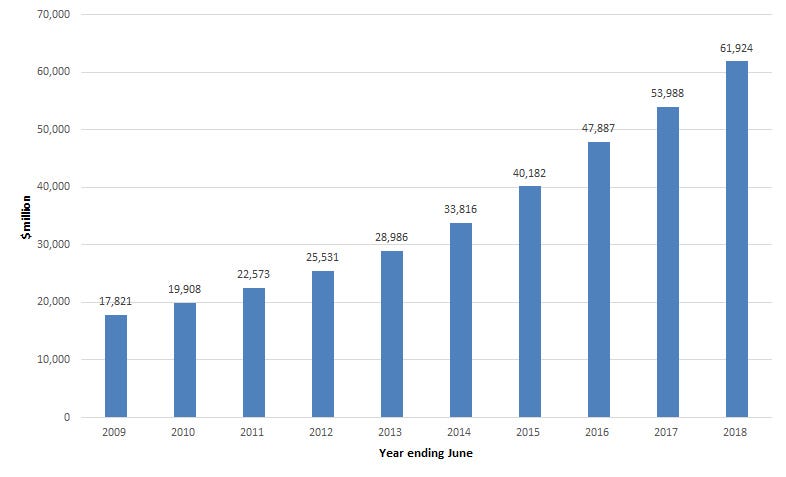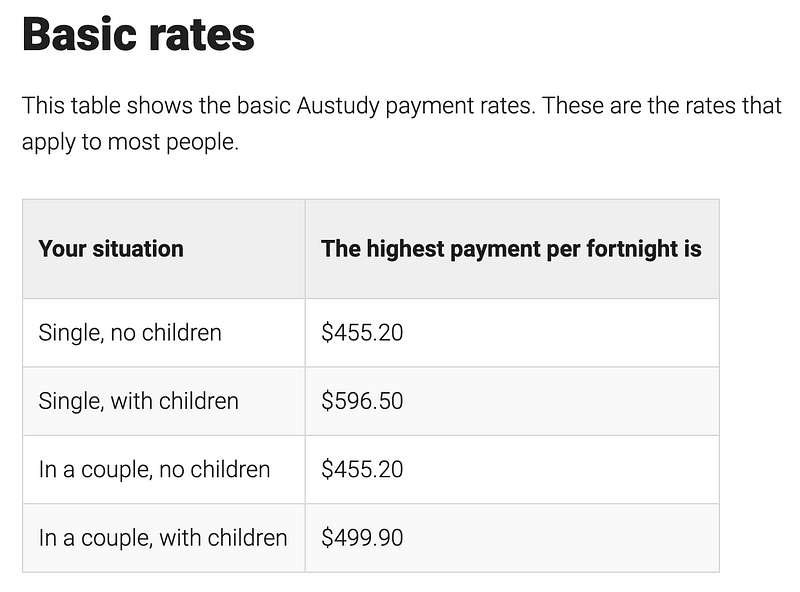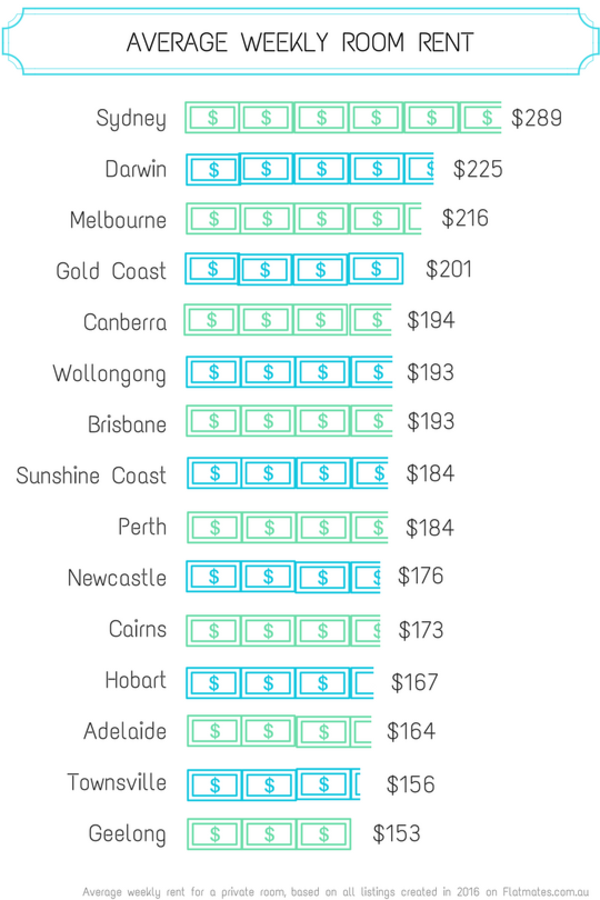Universitas Doctrina et Sapientiae
Re:defining the business systems for the tertiary eduction sector.
In 2010 i wrote a post-grad paper asking “Is there a need for New Higher-Education Business Systems” and whilst the answers and issues relating to this question have been the subject of vast insights since, it is still yet to be done.
They were fairly under developed considerations at that time. I did, try to make an ‘on campus’ shop, to sell connections & tablets (only just starting to emerge at that time); and had the view, of networking classrooms. But it was early days. Works since then, have no yielded ‘open badge’, standards, etc.
This article assumes the reader has read enough of my other posts. As the methodologies considered able to be deployed for universities, wouldn’t make any sense — unless the underlying concepts were able to be grasped by the reader.
Today, i find myself writing this article whilst considering what appears to be the most prominent options to advance my works, being either via federal government; or perhaps alternatively, the means to build a public-private partnership — designed to deliver meaningful results, out of a university.
So, with this in mind — whilst the role of government is enormously important, i am now going to write about how the opportunity to deliver meaningful results by uplifting the cyber-physical socioeconomic ecology operating within, and throughout universities, might be a great option.
Thereafter, i’m not sure whether to start with the solutions framework? or the problems landscape… Both, inter-relate in different ways… So, i’ll do a little of the solutions landscape, then dive into the problems — before going back into the solutions / ecosystems landscape, in more detail.
Introductory overview about the solutions landscape
Universities play a pivotal role in our society, operating multi-million dollar, and sometimes irreplaceable infrastructure; the capacity for a university to ‘get stuff done’ either alone, or collaboratively with others; is a compelling foundation that underscores the fact, that despite problems — their so very important.
This history, this tradition — is not, however, without its less honourable, historical and present day challenges. In 1856, Melbourne university is known to have played a significant role in the uprising that was the 8 hour movement. Today, it is reported that there are hundreds of thousands of university aged persons (mostly girls) funding the cost of living whilst attending university, by way of modern forms of prostitution.
The numbers reported are staggering. When taking into account the total number of university aged (women) persons; then subtracting those who are international students and otherwise cared for in family homes; the proportionality of this modern day illustrative problem, is truely remarkable.
So, yes. There does need to be a new series of business systems designed to redefine the economics of tertiary education, for all stakeholders involved.
Imagine if you will, that there is a students knowledge banking facility, set-up with the assistance of government to support the independent informatics needs of students; and that through this infrastructure, apps are created, interactive API suites produced — that both act to preserve and support the dignity of students, in addition to streamlining the cyber-physical infrastructure built to support university communities and facilities.
Imagine, if you will, that this student ‘knowledge banking facility’ be made to work; in the same sort of way, broader works intend to deliver across society.
This is not unlike the historical circumstances through which facebook grew
Imagine, the creation of an Cyber-Physical, Human Centric AI Cloud framework operated and curated by those involved in the university ecology; and that by way of this innovative cyber-physical infrastructure, students are provided new opportunities to gain income; faculties are furnished with greater insights by way of data resources; and the university environment as a whole, is in-turn better equipped, to instigate and develop innovative business systems, that include the means to engage those not currently engaged with universities, to form a life-long-learning relationship, partnership — with tertiary education institutions.
The ability to;
Engage in a topic, to update skills and fill the gaps
- Form ‘knowledge equity’ relationships between universities and innovators, to accelerate and improve success factors relating to innovation projects; and the means to commercialise those projects with dynamic equity accounting.
- Provide a landscape of jobs, that bridge those willing to pay for work that needs to be done; and those, who so dearly need the income.
- The ability to provide innovative financial and knowledge equity related services for students. From helping them deal with social & financial issues, through to the means for help to be provided, for life altering events.
- The ability to support advanced clinical information systems, to support their wellbeing and ensure, if they’re putting themselves at risk; there’s support available for them to ensure; it is more manageable than wilful ignorance could deliver.
- The ability to improve ICT security, operability & accessibility. By leveraging university capabilities to ensure technical resources required for study; are made to be affordable and fit for purpose for academic work.
- The ability to make use of micropayments infrastructure services to articulate what a person does in relation to their work with a university, and how that articulates overtime to gainfully positive outcomes.
Yet lets track back, to some of the underlying problems — as to form an improved means to communicate how the proposed ‘knowledge banking infrastructure’ is in-turn, able to support some meaningful resolutions.

Figure 1: Total amount of outstanding HELP debt 2008–09 to 2017–19 financial years ($m) Source: APH
The document “Overseas students in Australian higher education: a quick guide” (APH) provides some insights about the economic frameworks employed in the tertiary education sector, between domestic students (where ‘HELP DEBT’ is accumulated); and, data about international students, that seems to move between a 2018 number that says 398,563 of higher education enrolments by people in Australia on student visas; and on the same publication, seemingly suggest a 2017 number of 431,438. Therein, it is stated that revenue from overseas student fees has grown as a proportion of total revenue, to 23.3 per cent in 2017. The considerations brought about, would be inadequately considered by more simply considering the institutional factors alone; as the ability for students to survive is also an instrumental component, to the costs.
Focusing exclusively on the needs of Australian Citizens, the numbers suggest that Australian Citizens make-up about 68% of all students in higher education (inclusive to Non-University Higher Education Institutions).
Numbers provided by the department of education also state that there are ~840 thousand female students (Includes students who have requested their gender to be recorded as indeterminate/Intersex/Unspecified.) and ~673.4 thousand male students.

The “Sugar Baby University Australia Website” is an example of an array of similar websites that market themselves as a solution, to help students (physically attractive?) “avoid student debt and secure a better future”. As is illustrated on this one example, it suggests there are 177,500 Australian students who have turned to find Sugar Daddies, noting, this is very much targeting female students who would be amongst the total 840 thousand, illustrated above.

This site also goes on to market its service; stating,

What becomes alarming; at least from my perspective, is that this is one of many sex industry market participants targeting young women. It is unlikely that it is the case, that it is the 673.4 thousand university aged males who are those sought by these forms of ‘solutions’ to provide the above mentioned $3000 per month or about $700 per week; further more, the capacity to protect those ‘sugar babies’ from wrong-doers who may harm them, or get them involved in organised crime, is likely not something the site cares about.
Sadly, it seems neither do other community leaders. I wonder how these sorts of factors may influence enrolments, yet overall, what is the education provided about human relationships, and how do these stats relate, in secret — to abuse.
I also note, this situation is fairly similar in the US and the UK.

Austudy Payment Rates source: Human Services
If one considers that many of the international students will be financially supported, as is a requirement for their travel to Australia for studies; and that, some students may stay at home. Other students, particularly those studying difficult subjects full-time, require income somehow to support the cost of living. The Australian Government provides therefore, Austudy, at a rate of about $250 (including ‘rent assistance’’) per week. So lets evaluate what this actually means.

Source: Flatmates.com.au
As is illustrated aside, the average costs for renting a room vary based on which city, but average between $180–200.
On top of this, the cost of health, telecommunications, utilities and food need to be considered.
Additional study expenses; such as computing equipment, academic resources and travel.
If students require a vehicle to do work, that’s an additional (significant) cost.
So the facts of the matter are; that these costs are far beyond a students means, whilst accumulating student debt.
So the facts are; that it’s impossible to participate in university, without getting some form of a job, ideally something that provides ‘gainful income’.
Yet how easy is this to do, really?
Online ads offering housing in exchange for sex 'exploitative' but 'not illegal'
_Updated September 18, 2019 00:03:57 Advertisements offering accommodation in Adelaide in exchange for sex show how…_www.abc.net.au
Numbers provided by unemployed workers union suggest Ratio of job seekers to job vacancies: 1 to 15.57 (Dec 2018), so the idea that there’s paid jobs available for anyone who needs a job, appears to be a flawed assumption.
Making matters worse, many employers are now engaged in organised ‘free work’ initiatives. A Study by ABC looking into unpaid work called ‘internships’
Unpaid internships have the greatest potential for exploitation, experts say. Australia’s only nationally-representative study of internships, published in 2016, found 58 per cent of Australians aged between 18 and 29 had participated in “at least one episode of UWE [unpaid work experience] in the last five years”.
Therein, one troubling reality is that the means for young-people to get a ‘foot in the door’, to get their first job; seemingly often expects them to,
a. Accumulate student debt for the opportunity to learn
b. Live in poverty
c. Perform free work to get employers to issue work-experience certifications
More broadly, however, causal work, and new ‘gig economy’ options is providing the means for students to find some income, to survive whilst they’re being taught the lessons it’s said they most need, to succeed.
The overall numbers (and calcs) relating to causal work hasn’t been done by me recently as yet. I’ve found some numbers here whilst other metrics relating to the ‘gig economy’ can be found here, alongside other sources online.
Therein the underlying problem that i’m working to address here; is that whilst there are of course an array of casual work jobs, there’s also some fairly difficult circumstances being lived by tertiary students that deserves thought.
There are many, real-world psychological factors that act to inhibit or promote the capacities for a person to learn, and benefit most from university studies.
It’s actually quite important to ensure these material needs can be met.
The way a Knowledge Banking initiative, in universities, could be put to work to produce the sorts of innovative new knowledge economy instruments they may most benefit from, and become most capable of commercialising in various ways and forms; both here and overseas, by helping them better support their own lives through the use them to help them sustain studies.
To achieve this; the idea would be, that much like international platforms like Uber, Facebook and other platforms providing ‘gig economy work’; the local platform could provide the open-APIs to produce new local solutions, that can act to help students and improve academic outcomes & performance metrics.
The ability for Australian businesses to seek out opportunities for students to do small jobs, that may relate well to their fields of study; could be brought about. There could be intellectual property sharing agreements, with enterprise and small businesses; to ensure the needs of everyone is met.
This in-turn provides an array of innovative means to support dynamic knowledge frameworks, that can in-turn instructively assist academic staff, and indeed it may well be found; that university course-related projects, could be paired-up with business models, that could offer students income should others find their works, to be valuable; but that’s not all,
Part of what’s really important for the healthy growth of a university sector, is the ability to attract the best and brightest, world-wide ‘thought leaders’ and doers (those that think about the future, and those that make it) to find new means to resource both themselves; and those around them, to get great stuff done. Today, there is some sort of break-down between how universities leverage their capital and infrastructure investments, to generate returns.
Regardless of what those who talk about AI suggest to be an ‘alternative fact’, there actually is no such thing as a lack of jobs to do, nor will that ever be the case.
Whilst some might dream of a world like wall-e, leadership visions of the past present a manifest sense of style, illustrating remarkable displays of human spirit; yet even in these circumstances we must find those who are bold.
The other critical requirement, is the ability to significantly uplift the availability of statistical resources that are required by university based researchers (and students) who seek to improve both their own understandings of topical considerations; alongside ours.
The ability to produce semantic infrastructure that uplifts that manner in which data is collected, and made available in structured formats; can significantly ‘uplift’ the opportunities that can be brought about, to do so.
Shifting the the Human Resourcing Sector frameworks.
There is a significant role the HR industry plays in forming practices that deliver high-employment acquisition costs; and a desire, to obtain employees with prior ‘industry experience’ by large employers and their competitors.
I suspect the root cause analysis of the internship issues, would be found to be HR.
Whilst the current performance of the higher-education sector requires a great deal of work; the underlying consideration, that qualification of knowledge & skills, is instrumentally a function of higher-education; makes sense to me, particularly in an emergent cyber-physical market with AI.
Whilst it makes most sense to first define what might be called a ‘pilot’, the underlying belief is that people should form life-long relationships with the tertiary sector, much as people form life-long relationships with Gov, Banks, telcos, Facebook, Google and McDonalds. This form of relationship between citizens and learning institutions, might end-up looking something like medicare; where a learning record, and related apparatus, is developed by the individual overtime; with the support of institutions and government programs, that act cooperatively — much like the health sector; to deliver meaningful results for ‘consumers’. Therein, the ability to develop, maintain and grow a series of learning ‘micro-credentials’ can become part of a persons ‘inforg’ service (provided by the knowledge bank) that is in-turn supported institutionally.
Therein, it doesn’t matter whether someone needs to learn something new; whether they need to certify existing skills / qualifications; or whether their undertaking innovative works and seek support (& expertise) to do so.
It is considered that this form of ‘subscription service’ can in-turn support the development of trusted services, for knowledge practitioner engagements in the broader marketplace; alongside, the means to improve provenance and research support — exploring areas where gaps exist, and those that do not.
This in-turn, is intended to produce material support for significant downwards pressure on the cost of recruitment and related insurance costs.
Whilst government is already a significant ‘funds contributor’ to the university sector, the point of exploring these innovative options is to change the business models of how it does so as to be more like medicare, than what is currently employed.
Whilst i’ve illustrated economic underpinnings associations to sites, like sugar babies. I’ve not done the same for activities such as drug-dealing or crime.
There is an underlying set of metrics that present a factual circumstance where tax-payer money is being accumulated as a ‘debt’ by citizens. Therein, perhaps the opportunity is to refactor how this is made to work. Say, for instance; Government provides a standardised ‘debt facility’ that can be drawn upon by those who are unemployed and/or are studying, and this ‘facility’ in-turn is employed alongside a supportive tax strategy, to better support those building skills they need to generate income; and pay down the debt facility, as is otherwise seemingly the intent with the ‘fees-help’ scheme.
Therein; the means to ‘re-jig’ the opportunity structure, as to better support the needs of those who are not generating more than it costs to survive; provides an ability to in-turn better rationalise these costs, across the market.
Final Notes
The ability to leverage out a university environment to produce and deliver a test-bed framework for a knowledge banking industry ecosystem, that is intended to scale far further than the boundaries of a university; provides an array of enormous opportunities for university ecosystem participants.
The means to produce instrumental and evolutionary new tech, that has applications far more broadly than simply the university environment, is amongst the many opportunities and potential benefits of doing so.
Whilst it is absolutely required that government provide supportive infrastructure; including such things as verifiable claims / credentials, that can in-turn be used more broadly in society (ie: ‘proof of age’ creds); there is a broader opportunity to shift the failing university models, to something that better dignifies the human rights interests of its most vulnerable participants.
The schema considered viable to do so, is to form a ‘public private partnership’ that would in-turn be made operational in connection to on-site innovation labs & incubators, that are operating at campuses already. This in-turn could provide ‘work-space’ for early participants, keen to get involved.
The ability to do many of the jobs required to be done, is not actually that hard; and the means to beneficially employ university students at market-rates that are competitive, on many foundations, to ‘causal work’ alternatives, is considered likely to be disruptive to those involved in ‘web slavery’ or similar; which i consider to be a responsible approach.
There are a number of enormous risks, particularly those born by institutional minds who seek to make sure they’re the most important consideration.
There’s a high level of bravery required to put these people, in their place. whilst i’ve provided some use-cases, illustrating the way they’ve employed their moral grammar in their actions, until change is brought about; there’s many others — and frankly, these people — simply are not leaders, their liabilities. Leadership is about advancement of mankind, not pimping the younger generation out — so that elders can get a trip, and a nice dinner.
Reality is quite likely to be a problem for some; but the manifest means through which we define solutions to those problems, shouldn’t be made to be the problem of Young Australians, seeking to learn, grow, find love, build a meaningful life and be happy.
The means to articulate a framework where highly skilled academic professionals make amounts competitive to their commercial sector peers; is by attributing what it is they do, to the economic value chain associated to it.
This is what is brought about, when the ‘information age’ migrates to one that is all about knowledge. What a person does, and how their actions positive impact others — is really, what its all about — as has always, been the case.
in reality…
I asked an expert for some links about the problems.
Below are the links that he supplied.
$1.5tn in debt: student loan crisis shatters a generation's American dream
_With $60,000 in student debt, Cameron Vigil does not expect to marry or start a family anytime soon, or even to afford…_www.theguardian.com
Despite the economic recovery, student debtors' 'monster in the closet' has only worsened
_Has the student loan market has become a bubble? That's a fair question, says Barmak Nassirian, director of federal…_www.cnbc.com
University is not as lucrative as it once was
_FOR those of you wondering whether it's worth going to university, the latest OECD report provides some interesting…_www.news.com.au
HELP-debt-statistics - Parliament of Australia
_The Australian Taxation Office (ATO) has released new data, including updated information on Higher Education Loan…_www.aph.gov.au
Higher education fees are rising - so is it still worthwhile enrolling?
_The government has announced a plan to increase university fees. Most bachelor degree students starting in 2018 would…_theconversation.com
Is your university degree barely worth the paper it's written on? Discuss | Sonia Sodha
_In the past few decades we've seen a huge growth in undergraduate numbers. Back in 1945, a tiny 2% of the population…_www.theguardian.com
More Australian graduates head into part-time jobs as economic chill persists
_University leavers in Australia are increasingly settling for part-time employment after graduation as a flood of job…_www.theguardian.com
Number of Australian universities in deficit doubles
_Regional institutions hardest hit as domestic cap dovetails with intense competition for foreigners_www.timeshighereducation.com
Three charts on: how much Australia spends on all levels of education
_Australia spent A$111.8 billion on education in 2015, the most recent year for which the full dataset for all levels of…_theconversation.com
Australian universities struggle to cover domestic teaching costs
_Narrowing financial buffers raise questions over Australian universities' goals of being comprehensive_www.timeshighereducation.com
END